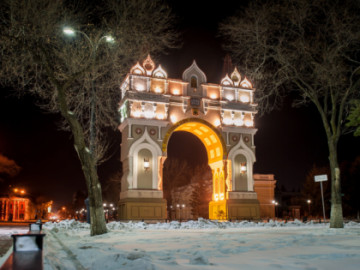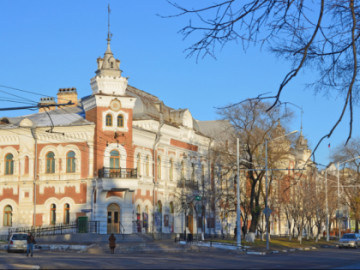Paleontological Museum and cemetery of Asian dinosaurs
The only Paleontological Museum in the Far East is in Blagoveshchensk. It features a world-class collection. Among the many exhibits it is worth paying attention to the bones of dinosaurs living in the Amur region 70-65 million years ago! This fact makes them the youngest known dinosaurs in Asia.
The history of the Paleontological Museum began in 1902, when Colonel Mikhail Manakin found the bones of the dinosaur skeleton on the right bank of the Amur River. Later on, as a result of studying the bones, the scientists named the 12 meters high animal as a manchurosaurus, and its skeleton was transported to the Geological Museum in St. Petersburg in 1925, where it remains to this day. A new splash of interest was caused by a huge bone found by a schoolboy Ivan Bastrykin in one of the local quarries in 1948. Then it turned out that the south-western part of Blagoveshchensk literally stands on the cemetery of dinosaurs! Here previously unknown species of hadrosaurus were discovered. And in 2004 the largest skeleton of а dinosaur in Russia was found near Kundur village, it belongs to the duck-billed hаdrosaurus. The decision to open a paleontological museum was made in 1997. The bones of amurosaurus, kerberosaurus, olorotitan and other dinosaurs found in this region are stored in it today. The collection also has a tooth and a tusk of a mammoth and a skull of a fossil bison. In summer the museum organizes access to excavations at the cemetery of dinosaurs.

































